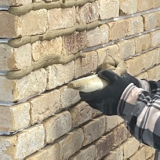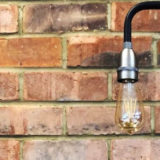Brick slips, with their timeless appeal, are a go-to for many homeowners and designers. But to ensure their longevity and pristine appearance, proper brick slip aftercare is essential.
This tutorial provides insights and steps on caring for your brick slips post-installation.
Introduction to Brick Slip Aftercare
Importance: Effective aftercare keeps brick slips looking their best, extending their life and ensuring they remain a stunning focal point.
Benefits: Regular maintenance prevents potential issues like staining, efflorescence, and general wear and tear.
Daily Maintenance
Dusting & Wiping: A soft brush or cloth can effectively remove daily dust and debris. Avoid abrasive brushes or scrubbers to prevent surface damage.
Addressing Spills: Clean up spills immediately, especially if acidic or staining, using a damp cloth.
Periodic Cleaning
Type of Cleaning Agents: Mild detergent mixed with water is often enough. Avoid acidic or harsh chemical cleaners that might damage the brick slips.
Recommended Techniques: For more thorough cleaning, use a soft brush in gentle, circular motions. Rinse with clean water and dry with a soft cloth.
Repointing & Repair
Signs of Deterioration: Look out for crumbling mortar, gaps in the joints, or loose brick slips.
Steps for Repointing:
- Remove damaged mortar with a pointing tool or thin chisel.
- Mix the pointing mortar to a smooth consistency.
- Carefully fill in the gaps, ensuring a firm press.
- Smooth the surface and remove any excess mortar.
Protection Measures
Sealing: A quality sealant can protect against moisture and staining. Ensure you choose one suitable for brick slips and the area’s conditions.
Weather Protection: For outdoor installations, consider additional protective measures like weatherproofing sprays or barriers.
Troubleshooting Common Issues
Efflorescence: White, powdery deposits can appear due to soluble salts in the bricks or mortar. Clean with a mild acid solution and rinse thoroughly. Prevent recurrence with proper sealing.
Discoloration: Ensure regular cleaning and address any potential causes like leaks or water damage.
Conclusion
Proper aftercare is the key to enjoying the beauty and durability of brick slips for years. With regular maintenance, timely repairs, and appropriate protection measures, brick slips remain a testament to excellent taste and quality construction.
FAQs
- How often should I seal my brick slips?
Typically, every 2-3 years, but always refer to the sealant manufacturer’s recommendations. Check out our range of brick slip sealers here - Can power washing be used for cleaning brick slips?
It’s best to avoid power washing, as it can erode the mortar and damage the brick surface. - What’s the best way to handle mold or algae on outdoor brick slips?
A solution of equal parts water and white vinegar can help. Apply, let it sit for a few minutes, then scrub gently and rinse. - Are colored brick slips more prone to fading?
If exposed to direct sunlight for extended periods, some fading might occur. Using UV-resistant sealants can help mitigate this. - Can I paint over brick slips if I want a color change?
Yes, but ensure the surface is clean and use a primer suited for brick surfaces before painting.



































